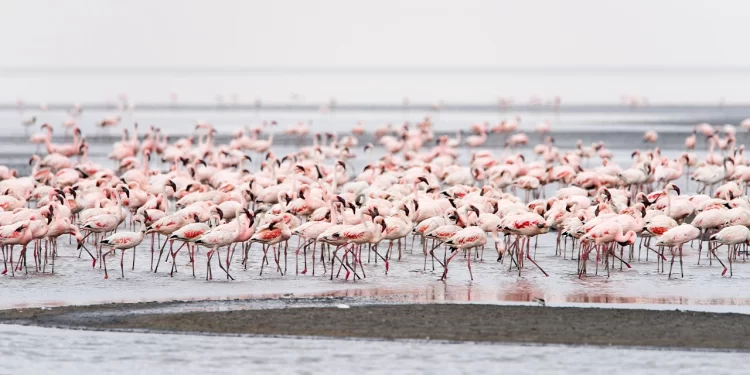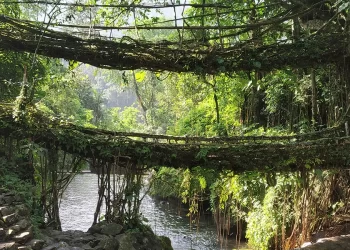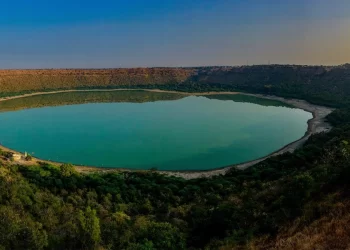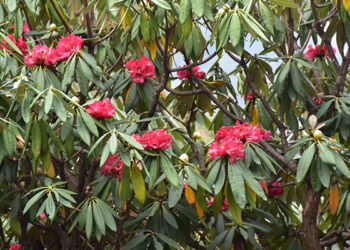Fed by the Southern Ewaso Ng’iro River and mineral-rich hot springs, Lake Natron evaporates faster than it fills, concentrating sodium carbonate and other salts to extreme levels. The result is a hypersaline, highly alkaline endorheic basin, inhospitable to most vertebrates. For lesser flamingos, though, this caustic chemistry supports a viable nesting ground. It deters many predators from reaching seasonal islets where an estimated 75% of the global population gathers to breed, sometimes exceeding two million individuals in peak years. These numbers are sustained by Spirulina, a type of cyanobacteria tolerant of high pH and reliably available through the critical rearing phase.
Also Read: Devils Tower, A Solitary Monolith In Northeastern Wyoming
The birds build raised mud cones on exposed soda flats, working within a narrow dry window when inflow stays low and crusted surfaces are stable enough to hold form. North of Ol Doinyo Lengai in northern Tanzania, the lake’s water levels depend less on local weather than on rainfall across the Kenyan highlands. A sudden rise or drop in inflow can disrupt entire colonies with little advance signal.
Rupesh Kumar is an accomplished Journalist, Author, Graphic Designer, and Strategic Thinker. He has worked with scores of news and sports channels in India and is an expert in crafting engaging & informative content.












